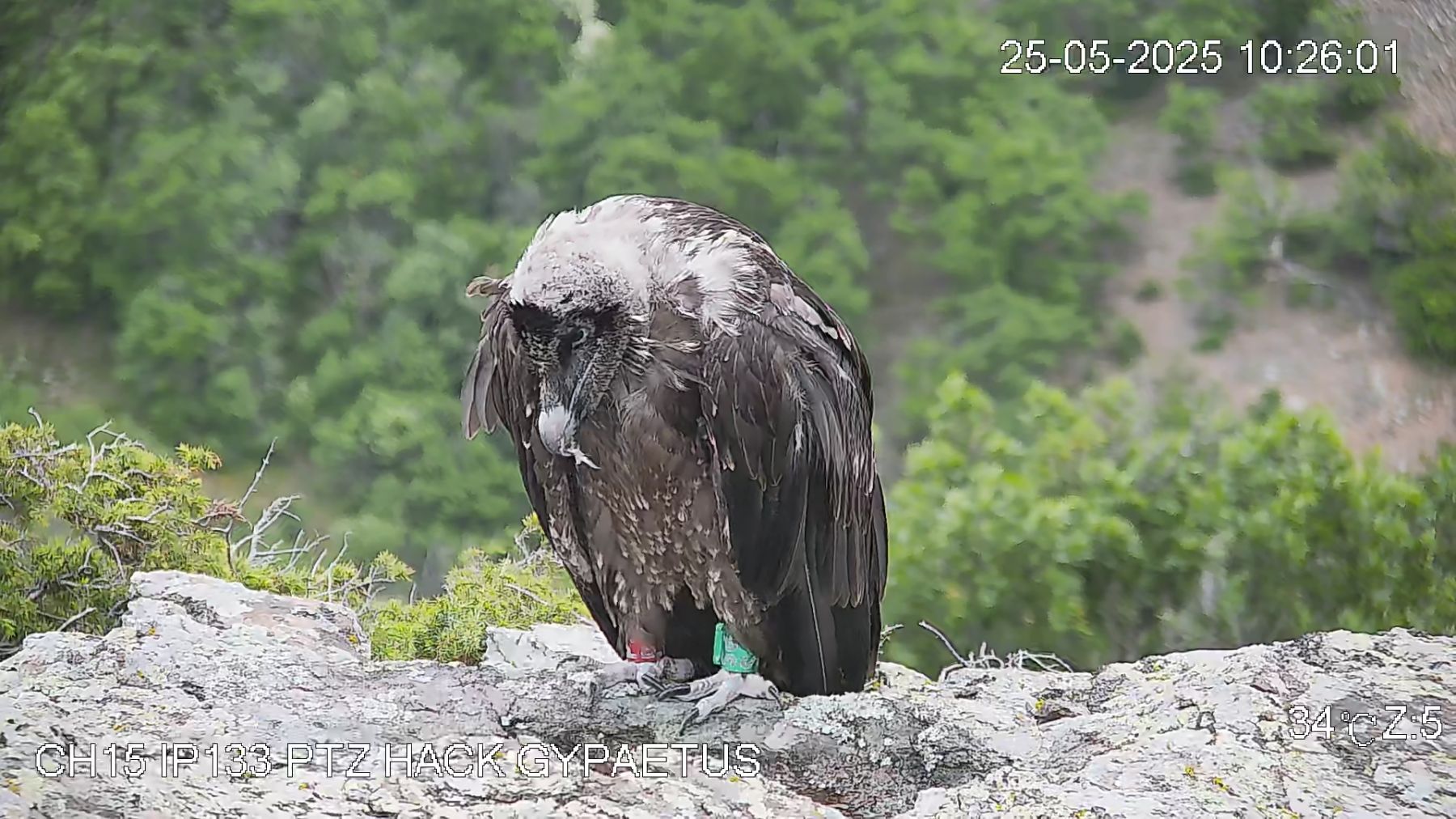The first egg of the season in the bearded vulture captive breeding network (EEP) was laid last weekend by a female in the Richard Faust specialized captive breeding network in Haringsee, Austria, run jointly by the VCF and the Austrian NGO EGS.
The breeding pair is formed by a 28 years-old male (born 1989) and a female three years younger. The male is a descendant of the only bird included in the EEP coming from Crete, and the female is from the former Tierpark Friedrichsfelde second breeding pair. This pair started to breed in 2002, with success from the first year. Since then 30 eggs have been laid, from which 22 chicks hatched, and 20 survived. From these 20 birds 8 are included in the EEP, assuring that their genetic information will persist in the breeding network, while the rest reintroduced to the wild in the different projects the VCF is involved with. We expect this egg will hatch around the 19th of January.
Normally, bearded vultures lay their first eggs around Xmas, but it is well known that females which are breeding for the first time lay their first egg later than more experienced birds (see figure below). Our data shows that average date of arrival of the first egg in captivity is 30th of January (n=46). After their 5th breeding season the laying date is on average 29 days earlier (1st of January). Furthermore, from the fifth laying year onwards, the laying date for each female on average changes only ±5.77 days.
The bearded vulture captive breeding network (organised under an EEP program under EAZA – European Association of Zoos and Aquaria, and managed by the VCF) is a fantastic and rather complex collaborative effort between many people and organisations – and is at the base of the successful reintroduction projects that are restoring the populations of this species across its former range (Alps, Grands Causses, Andalucia and Corsica). As part of this coordination, the VCF provides technical support and targeted coordination to zoos, animal parks, and the specialized captive breeding centres holding bearded vultures, always trying to maximise the establishment of new pairs, improving the husbandry, reducing mortality, and improving breeding productivity.
Figure: The temporal distribution of the date of egg-laying in female bearded vultures (n=46) over their first 27 reproductive cycles.



